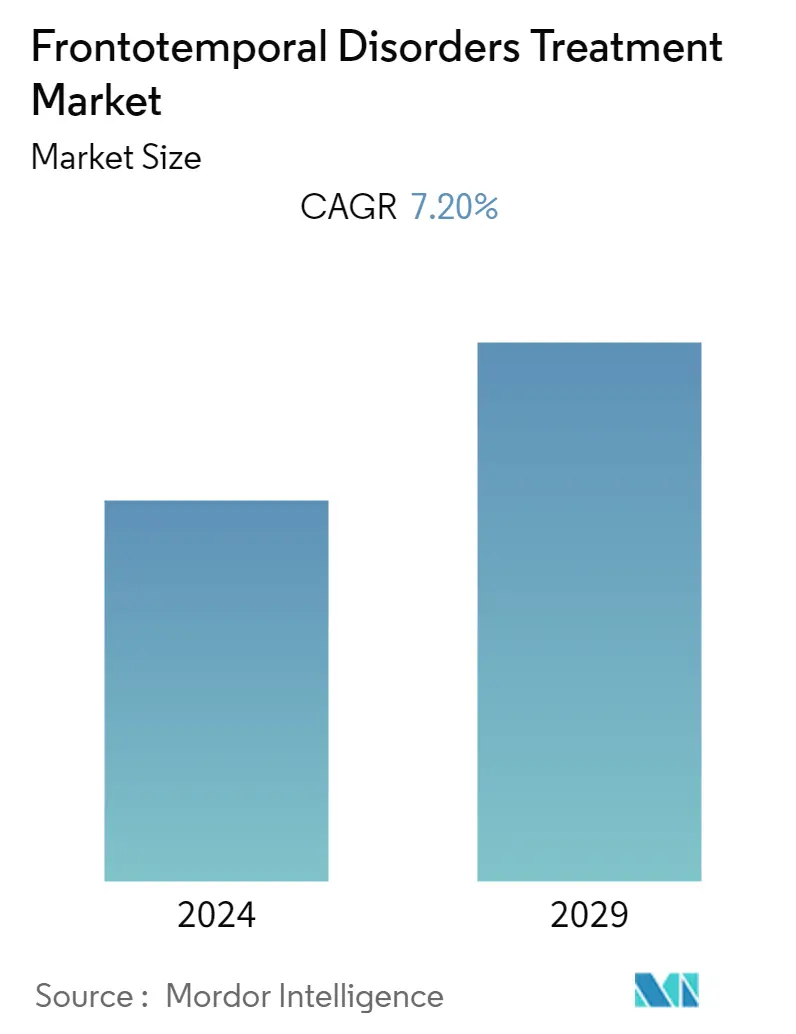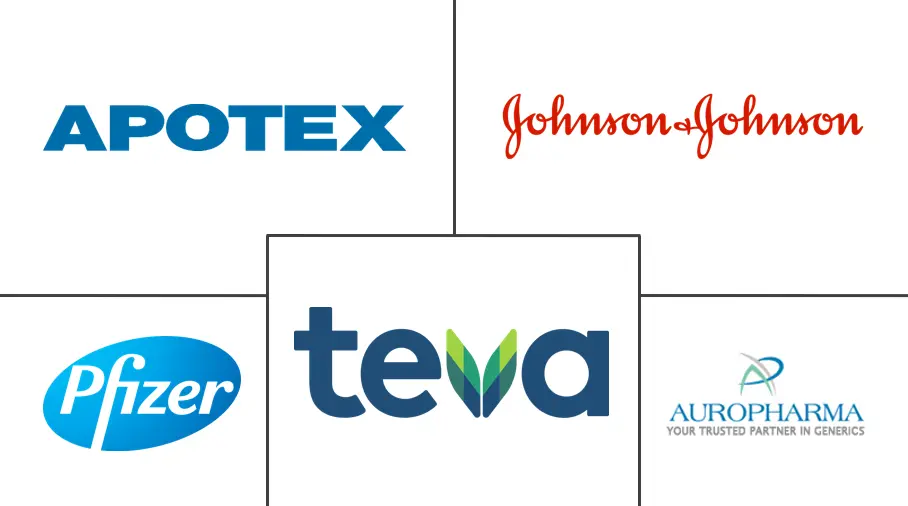Market Size of Frontotemporal Disorders Treatment Industry

| Study Period | 2021 - 2029 |
| Base Year For Estimation | 2023 |
| CAGR | 7.20 % |
| Fastest Growing Market | Asia Pacific |
| Largest Market | North America |
| Market Concentration | Medium |
Major Players
*Disclaimer: Major Players sorted in no particular order |
Need a report that reflects how COVID-19 has impacted this market and its growth?
Frontotemporal Disorders Treatment Market Analysis
The frontotemporal disorders treatment market is expected to register a CAGR of 7.2% during the forecast period.
- The outbreak of the pandemic positively impacted the market. The cases of dementia, anxiety and cognitive impairment significantly increased during COVID-19 among all age groups. For instance, according to a study published by the National Center for Biotechnology Information (NCBI) in June 2020, people with cognitive impairment and dementia, in general, were more likely to have a greater risk for COVID-19 exposure and both caregivers and care receivers were undergoing considerable stress than usual during the pandemic. Such a scenario increased the rate of frontotemporal disorders among people.
- Furthermore, people who have suffered from COVID-19 have also reported suffering from frontotemporal disorders. For instance, a study published in the journal Frontiers in Aging Neuroscience in October 2020 found that some patients who recovered from COVID-19 had sleeplessness, depression, anxiety, post-traumatic stress disorder, and cognitive impairment. Thus, considering such factors, the market witnessed considerable growth during the pandemic and is expected to continue the same during the forecast period.
- The growing prevalence of dementia and other frontotemporal disorders is one of the major factors propelling the market growth. For instance, as per the data published by the NCBI in March 2021, an estimated 6.2 million Americans aged 65 and older were known to be living with Alzheimer's dementia in 2020. The report also stated that the number could grow to 13.8 million by 2060, barring the development of medical breakthroughs to prevent, slow, or cure Alzheimer's dementia.
- Similarly, the World Health Organization (WHO) reported in September 2022 that more than 55.0 million people worldwide were currently known to have dementia. The report also stated that nearly 10.0 million new cases are reported every year.
- Furthermore, the same source also stated that dementia is currently the seventh leading cause of death among all diseases and one of the major causes of disability and dependency among older people globally. Also, dementia is one of the major causes leading to frontotemporal disorders. Therefore, increasing cases of dementia are expected to surge the rate of frontotemporal disorders, thereby propelling market growth.
- The increasing drug development grants and funding by the government, as well as non-government, are also boosting market growth. There are currently no FDA-approved disease-modifying treatments for frontotemporal disorders, and symptomatic treatment provides only limited benefit to patients.
- Recent scientific findings have improved our knowledge of the underlying pathogenic mechanisms of a frontotemporal disorder, fostering the development of potential disease-modifying therapies. Therefore, to accelerate the research and drug development procedure, in December 2020, the Association for Frontotemporal Degeneration (AFTD) and the Alzheimer's Drug Discovery Foundation (ADDF) issued a joint request for proposals (RFP) for new research aimed at advancing and accelerating the diagnosis and treatment of frontotemporal disorders, the most common dementia in people under 60. The funding for this RFP is being provided through the Treat FTD Fund, with award recipients receiving up to USD 2.0 million. Thus, such a scenario is anticipated to accelerate the demand for frontotemporal disorders treatment over the forecast period.
- However, cost issues and a lack of awareness across several regions will likely hinder market growth over the forecast period.
